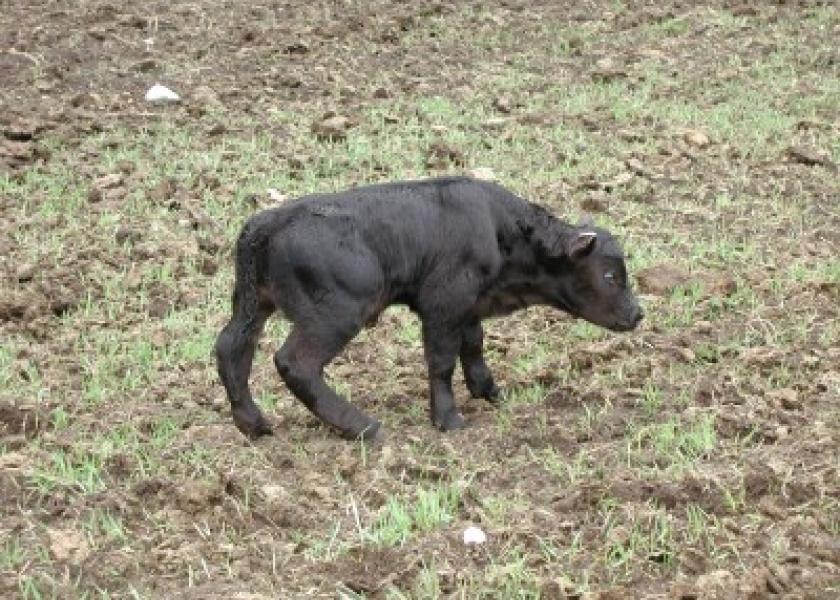Prevent Calf Abnormalities by Managing Beef Cow Diets

Feeding silage, baleage, or apple pulp to pregnant beef cows requires careful management or congenital defects may affect calves.
By: Dan Buskirk, Michigan State University Extension
Beef cow gestational nutrition may hold the key to a serious congenital defect of beef calves. Affected calves, called ‘acorn calves’ or ‘bulldog calves’, are the result of a condition referred to as congenital joint laxity and dwarfism (CJLD), congenital spinal stenosis, or congenital chondrodystrophy of unknown origin (CCUO). An association of CCUO with grazing drought-affected pastures, feeding silage-only diets, or supplementation with apple pulp, strongly suggests a nutritional link.
Condition
Reporting of a skeletal system deformity in calves, first began in 1932, in California’s Sierra Nevada region. Ranchers referred to deformed calves as ‘acorn calves’ due to a belief that the ingestion of acorns by dams during gestation led to the condition. Dismissal of this theory came after observation of the deformity in calves from dams with no access to acorns. Frequent reported cases of the condition, now called CCUO, occur in the northern U.S. and Canada. The condition may afflict only a few, or many calves in a herd. Calves affected with CCUO are characterized at birth by bowed legs or sickle-shaped legs with weak joints (joint laxity), shortened legs (disproportionate dwarfism), and in some cases a notable underbite (superior brachygnathia). Joint laxity may contribute to a greater incidence of calving difficulty and elevated early calf mortality. Joint laxity also contributes to a staggering or wobbly gait. Within a few weeks following birth, joints of surviving calves may begin to stabilize, allowing calves to walk more normally. However, affected calves typically remain much smaller in stature and slower growing than their normal herd mates.
Cause
Although the definitive cause of CCUO has not been determined, the condition in the Northern U.S. and Canada, has often been associated with sole feeding of fermented forages to spring-calving cows during mid- to late-gestation. Most commonly, these diets are without dry feed or grain supplementation. Presence of a factor, or factors, unique to specific geographical areas may cause CCUO, but most investigators are convinced that the underlying cause relates to a maternal nutritional deficiency. Some evidence correlates calves affected with the condition to their low concentrations of liver manganese (Mn). It is possible that bioavailability of Mn is reduced in ensiled forages, although other minerals or factors may contribute to the necessary conditions to trigger CCUO. The apparent good health and generally good mineral status of dams giving birth to CCUO calves suggests that any nutritional deficiency arising during gestation may be either short term, resolving before symptoms are shown in dams, or not severe enough to affect dam health.
Prevention
In all recorded outbreaks of CCUO, spring born calves appear to be most susceptible. This corresponds with mid-gestation supplemental feeding or grazing of drought pastures during the last two trimesters of gestation. Anecdotally, clover or grass silages may cause the greatest risk. Experimentally, supplementation of silage diets with dry forages or dried grains reduces or eliminates the risk of CCUO. In one study, as little as five pounds of dry hay and 1.5 pounds of dry rolled barley fed daily per animal eliminated the condition in cows fed silage diets. Though not precisely defined, the critical feeding period is likely within the last 180 days of gestation. Feeding a balanced, loose, mineral-vitamin supplement is recommended, however, there is not sufficient evidence to suggest that mineral supplementation alone can prevent the occurrence of CCUO when cows are fed only fermented forages.







